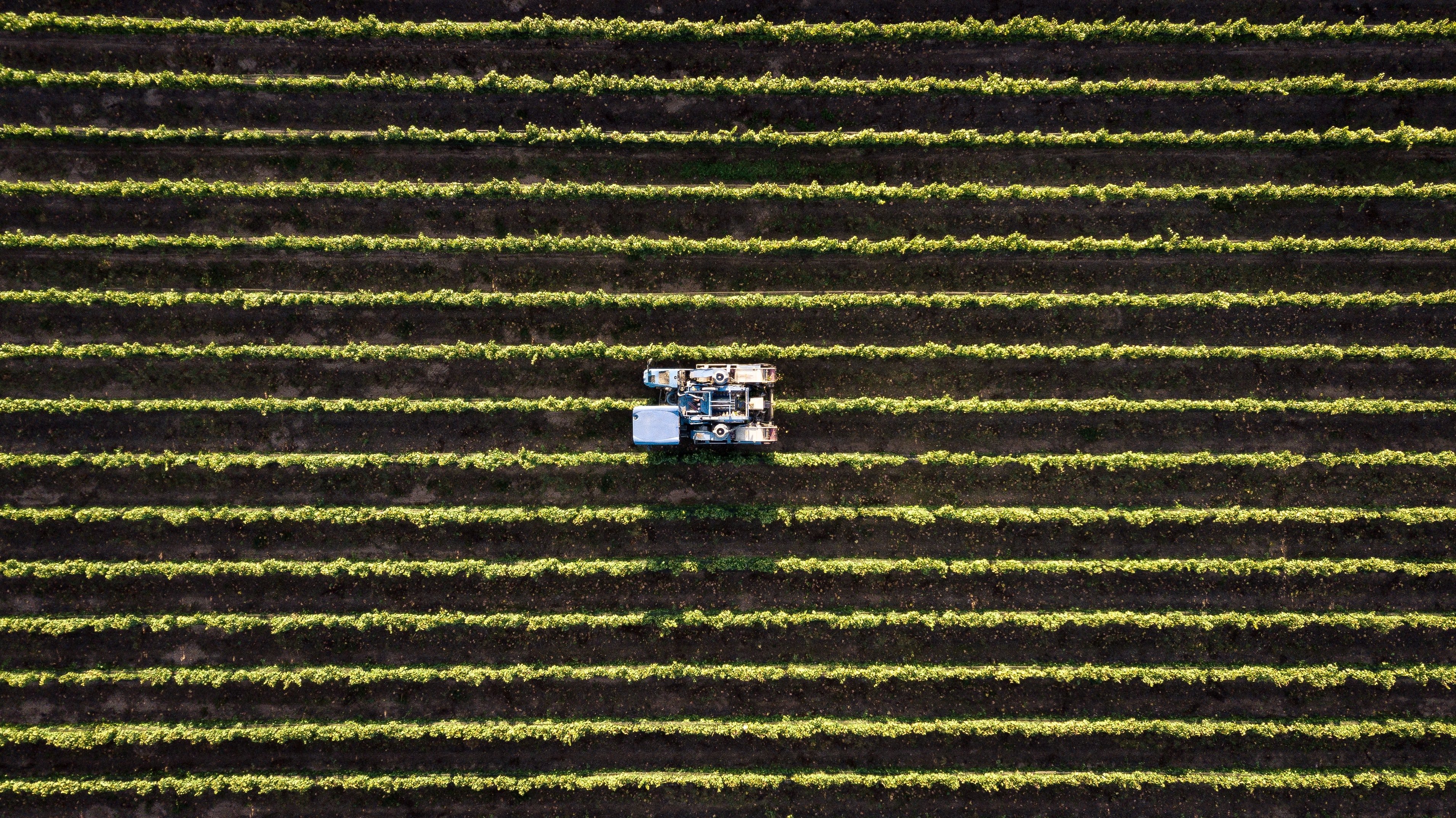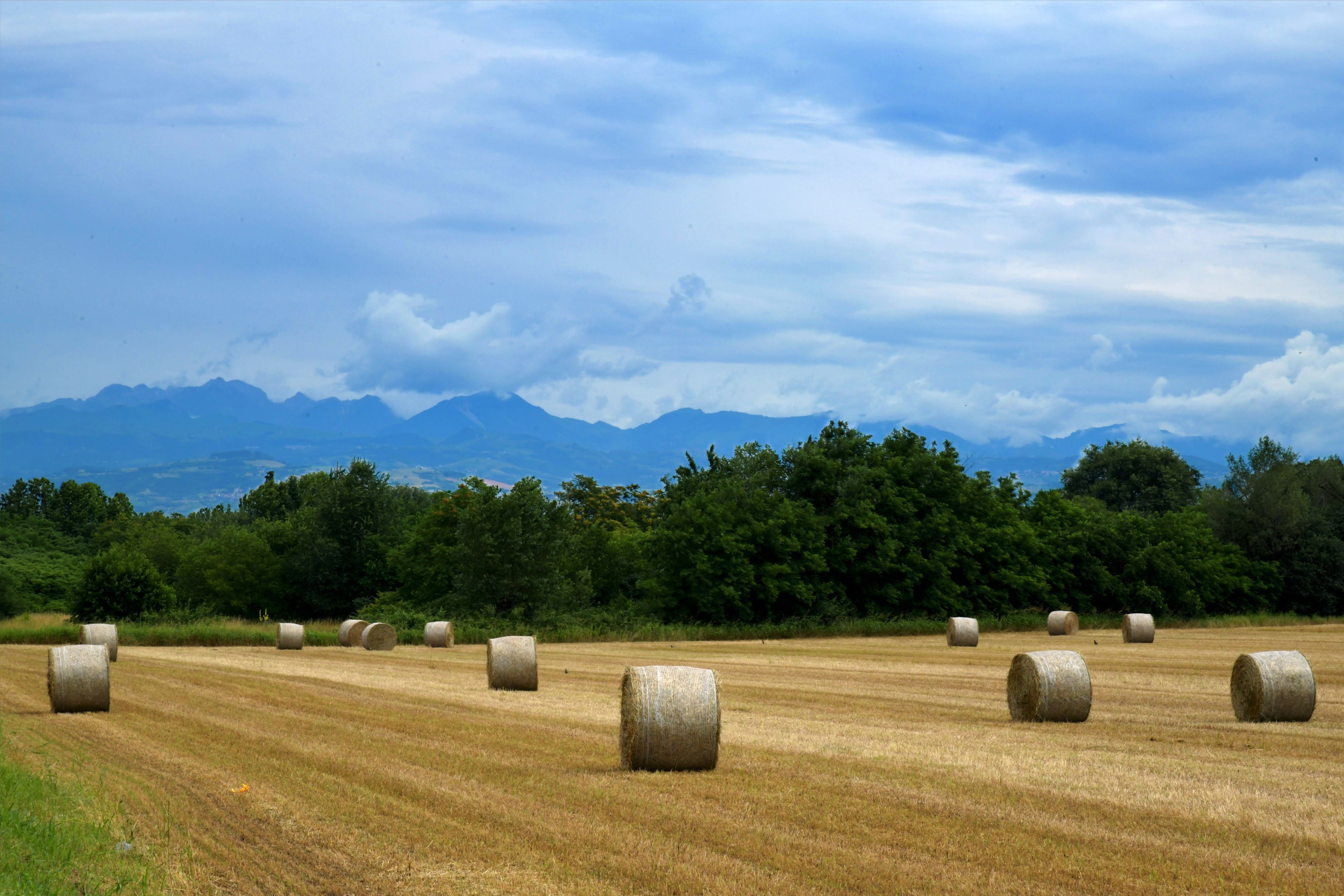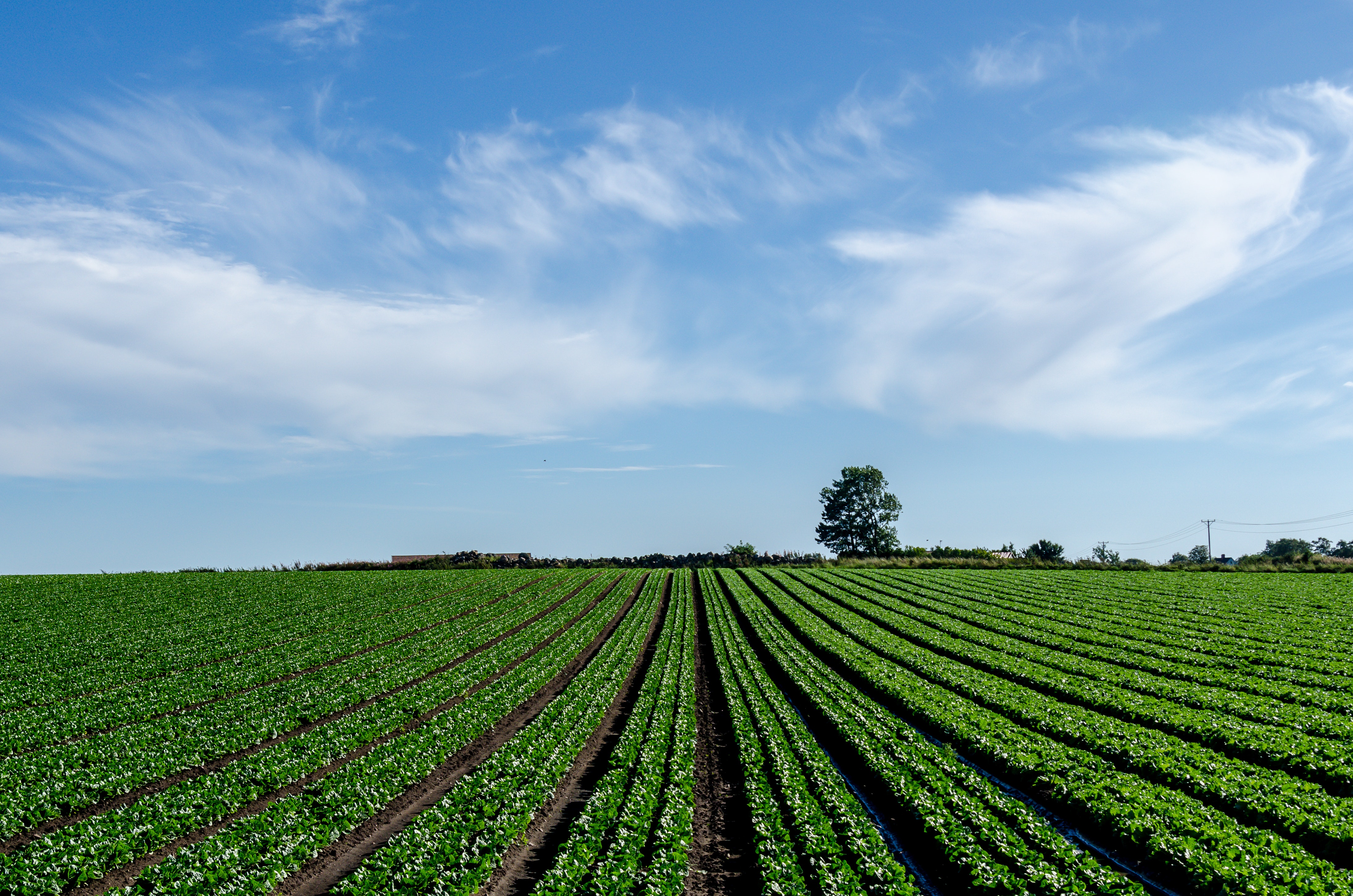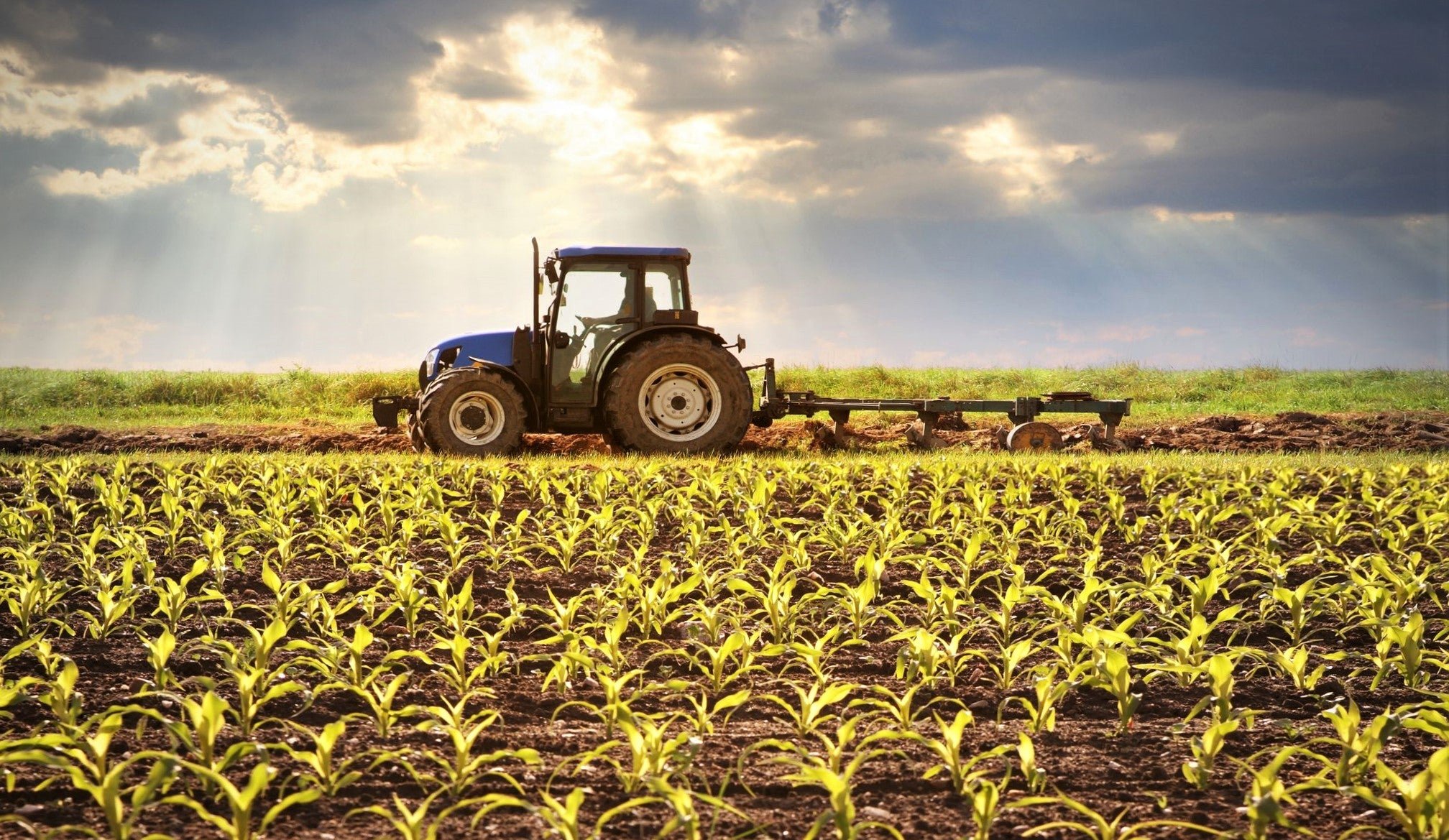Most Popular Regenerative Farming Practices
The global population has increased dramatically over the past century due to advances in medicine, and lower mortality rates.
This rapid growth has impacted the farming industry in a major way — nowadays, the focus of agricultural systems has been to meet the needs of the present population.
Unfortunately, many of the practices we are currently using are simply not sustainable. Soil health is reaching critical levels and, while they might be meeting the needs of the present, if we keep up these unsustainable practices, we won't be able to meet the food needs of the future.
Thankfully, there may be an answer to our troubles. Regenerative farming practices are quickly spreading throughout the agricultural sector, promoting a better way to farm.

What are regenerative farming practices?
Regenerative farming is a philosophy that asks us to look at farming in a different, more ethical and sustainable way. It reminds us that nature is key to great crops in both quantity and quality of produce.
The funny thing about regenerative farming is that it’s not a new idea. In fact, it’s the way indigenous communities have farmed for millennia. It’s how we used to do things before industrialization, so readopting these practices should be a natural fit.
There are no stringent rules in place for regenerative farming, which can make it difficult for farmers looking to adopt the philosophy. That being said, there are some key principles that regenerative farming must abide by.
By following these principles, farmers can grow produce in a way that not only lessens the environmental damage industrial farming can cause but also reverse the damage already caused.

The five principles of regenerative farming
At its core, regenerative farming is a holistic philosophy that teaches us to become one with nature and grow produce in harmony with the earth.
The core principles of the regenerative agriculture philosophy are based on restoring the natural goodness that soil contains.
Principle 1: Soil Armor
The first principle tasks farmers with protecting their soil against erosion and temperature changes. By covering the soil during the offseason, it has a chance to increase its biology which will cycle nutrients and build an aggregate structure that accepts and holds greater quantities of water.
Principle 2: Diversity
The second principle of regenerative agriculture focuses on reintroducing biodiversity to our farms. The more diversity you can support on your farm, the more you will feel the benefits of natural protection.
Principle 3: Continual Live Plant/Root
The third principle of regenerative agriculture teaches us that we don’t need to avoid plant life growing between harvesting and planting crops. The longer you have green, photosynthesizing plants in your fields, the more carbon you will be able to capture while introducing more nutrients into the soil.
Principle 4: Livestock Integration
The fourth principle reminds us that the best cultivators are the ones who have roamed our lands for thousands of years. Livestock may be a leading cause of greenhouse gasses, but they can also fight climate change! Livestock can agitate the soil in a less damaging way than tilling, which allows for soil biology to flourish.
Principle 5: Minimizing Soil Disturbance
The final principle of regenerative agriculture focuses once again on the soil. Without soil, we can't grow anything, so we need to make sure we do everything we can to improve and maintain soil health. This means less industrial aggravation and more letting nature do what it does best.
The benefits of regenerative farming
The environmental impact of industrial farming cannot be understated. Attempting to undo the damage caused by industrial practices should be our number one concern as an industry. That being said, the benefits of regenerative farming aren’t purely environmental. They can have a positive impact on all aspects of the industry, from better yields, less failed crops and potentially, big savings.
The benefits of regenerative agriculture include, but are not limited to:
- Better soil health
- Reduced reliance on synthetic inputs
- More resilient ecosystems
- Lower toxicity levels/lower pollution
- More nutritious produce
- Diverse crops (resulting in more diverse revenue streams)
- Improves the local communities and their economies
- Reduced soil erosion
- Less runoff
Many farmers also report feeling a greater sense of purpose and enjoyment in their work!

Most popular regenerative farming practices
Adopting regenerative farming will take a decent amount of work. There are many practices we use in industrial farming that have no place in regenerative farming. While this may seem like a daunting task ahead for those looking to make the change, it’s actually incredibly simple to adopt regenerative farming practices. Most are simply doing less of what we’re currently doing and, in some cases, removing the need to perform traditional farming practices entirely.
Let’s take a look at some regenerative farming practices that are being used at the moment. It’s worth noting that farmers don’t have to adopt every single practice to be classed as a regenerative farmer, and this list is far from exhaustive. This is why the core principles are so important when adopting regenerative agriculture as your philosophy.
Cover cropping
As we mentioned earlier, covering up your soil can do wonders for your crops, and having continual growth from plants or roots can help capture carbon and enrich the soil even further. These two regenerative farming principles are perfectly encapsulated with cover cropping.
Cover cropping is the practice of planting crops in soil that would normally otherwise be bare after a cash crop is grown and harvested. Cover crops are diverse and can be planted during harvest time or between rows of permanent crops. Planting cover crops alongside permanent crops can also reduce the number of weeds that would normally grow in the same space.
Cover crops keep living roots in the soil to help promote biodiversity. This in turn helps to reduce soil erosion, increase water retention, and improve soil health, resulting in better crops and more fertile soil.
Holistically managed grazing
Holistically managed grazing – also known as intensive rotational grazing – is a practice with Indigenous roots. It looks to mimic the way large animals, such as bison and wild horses, moved in herds across grasslands. This practice revitalizes the soil through manure and organic matter being trampled into the soil. It’s also a fantastic alternative for tilling, as the livestock gently agitates the soil.
This method of grazing moves livestock between pastures on a regular basis to improve soil fertility and allow pasture grasses time to regrow. Grazing sessions typically last for 30 days or more to allow time for plant life to fully recover before the grazing cycle repeats.
As with other regenerative agriculture practices, there are many benefits to holistically managed grazing. Allowing the grass to recover helps the soil become more resilient. The root system can grow deeper and stronger, while more energy is harnessed via photosynthesis. Not only does this make the soil more suitable for growing large crops, but it can also improve water infiltration and retention. This helps to reduce the risk of flooding and allows the fields to become more resistant in the face of drought.
No-Till / Minimum Till Farming
Tilling is the farming practice of preparing land using mechanical tools to agitate the soil. The idea is to loosen and aerate the top layer of soil to help the seeds settle better when planting a crop. It also serves to remove weeds, worms, slugs and other harmful factors that may interrupt the crop.
The problem with tilling is that it severely reduces the soil’s nutrients and decreases the infiltration rate of water. This makes the soil dry and uninhabitable, resulting in runoff and erosion.
Zero/minimal tilling farming are techniques that reduce or eliminate the need to break up the soil each season. This helps to reduce the amount of CO2 that leaves the soil and enters the atmosphere and improves soil quality, making it easier to grow future crops.
Of course, there are some soil types and particular crops that can benefit from tilling, but this regenerative farming practice looks to reduce tilling as much as possible.
Permaculture design
As the name suggests, permaculture design is a design process that takes ecology into account rather than focusing on mass production and machinery. Permaculture systems tend to be more efficient and productive than conventional farms. They have better water cycles, higher nutrient levels, and are more sustainable.
Permaculture is much more than a regenerative agriculture practice. It’s a design science, a philosophy and a way of life. It’s a truly holistic, natural way of farming that respects natural ecosystems and offers many benefits.
Composting
Composting is one of the most simple practices in agriculture. It’s a natural process used to recycle organic matter, such as food scraps, old produce, and leaves into a natural, highly enriched fertilizer that can be used to grow new crops.
The process is so simple that it’s been widely adopted by the general public who are looking to reduce their environmental impact. Some chose to use composting bins – which are designed to speed up the decomposition of organic matter – while others simply create a pile in the corner of their garden and let nature do its work.
On a larger scale, farmers can use composting to help cut costs by reducing and even completely removing the need for synthetic fertilizers. It’s also incredibly useful for smaller farms that cannot support livestock that produce natural fertilizer.
Zero synthetic or fossil fuel-based inputs (or heavily-reduced usage)
It doesn’t take an expert to understand how irritating and damaging pest problems can be to your crops. That’s exactly why we introduced GM practices and chemical-based pesticides into our industry. However, as we learned from the organic revolution, customers prefer completely natural produce.
The good news here is that farmers that are producing organic goods are already operating within the bounds of regenerative farming. Regenerative farmers make every effort to reduce their reliance on chemical-based products and instead, rely on nature to do what it does best. This creates a far more diverse ecosystem that promotes growth and results in much healthier food for humans.

Agroforestry
Agroforestry is another Indigenous practice that overlaps with regenerative farming. This practice looks to mimic forest systems by integrating trees and shrubs into crops and land used for livestock.
There are two main types of agroforestry; Silvo-pastoral agroforestry, which means the grazing of animals under trees – and Silvo-arable agroforestry, where crops are grown beneath trees. The purpose of both is to enrich the soil with help from the trees, which have roots that go far deeper than other plant life. This allows for deeper penetration of carbon and other key nutrients into the soil.
Agroforestry also ties in with other regenerative farming practices, such as cover crops, permaculture design, and conservation buffers.
Conservation buffers
Conservation buffers are areas of land where permanent vegetation is established in and around crops. You have likely seen this across many farms which use bushes or shrubbery to border each field.
Conservation buffers do much more than separate your crops. They can have a similar effect to cover crops, as they can intercept sediment, reduce soil erosion and protect the soil. Buffers are also used to filter agriculture runoff to reduce the costs of water treatment.
How to support regenerative farming practices
The short answer here is simple; invest in regenerative farming. The food industry as a whole is facing major challenges right now and, unfortunately, farmers are suffering the most. During these difficult times, farmers simply cannot afford to dedicate the time and resources they need to overhaul their practices.
At Buffalo Market, we are committed to a greener future. That’s why we work with CPG brands that are looking to improve their environmental impact and help them source their food in better, more sustainable ways.
To see how we can do this for your brand, get in contact today!


